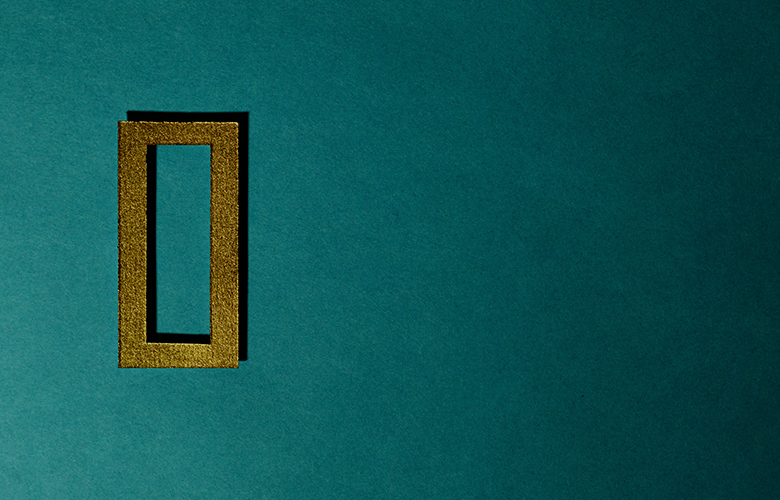
The Parable of the Cipher and the Purpose of Zero — What is the purpose of zero? Early ancient civilizations did not have a symbol for zero. They used symbols and tokens: one token for what we know now as 1 or I, two tokens for II, three tokens for 3 or III, etc. Parables are metaphors using old symbols, signs, and languages. Sometimes numbers are merely crucial points, just like gatekeepers play vital roles.
You must first perceive a lack.
By removing something like one token from the sand, you leave an imprint. Showing there once was a thing taking space that is not there anymore. That is how zero or ⭕️ supposedly came into existence. How do you name something you cannot see. That is the paradox.
“Some of these ideas that we take for granted had to be dreamt up. Numbers were there to count things, so if there is nothing there, why would you need a number? The whole of modern technology is built on the idea of something and nothing.” – Marcus du Sautoy, professor of mathematics at the University of Oxford.
With zero, something is made out of nothing — or nothing appears from removing something. Scientists and mathematicians don’t go insane over what used to be called the placeholder in old Buddhist arithmetics: the point that held the place after, and between two or more numbers. In economics, zero becomes crucial. In the human mind, one ‘0’ can mean many things. It differentiates between abundance or lack.
The past is akin to the token, it only lives in our memories. It doesn’t exist anymore. Hence, we shouldn’t hold on to the past unless there is a lesson or something to improve on. Ancient civilizations crumbled because cultures, traditions, and rituals in the hands of selfish humans turned into cults.
The word “zero” is a corruption of the Arabic word for “nothing”, ‘sifr,’ which is itself a mis-translation of ūnya, the Sanskrit word for “empty.” Thus the derivation of the word cipher, meaning code, from the Arabic ‘sifr.’
In contemporary Arabic, ‘sifr‘ means both “zero” and “nothing.” Sifr is also the origin of cipher and naturally enough — decipher.
You would fill it with something, some water or some coins. The value of the content depends on the usage you assign to it. In that case, ‘nothing’ means empty.
A tracker uses the art of observing. What he is seeking is not physically there. He never looks at his feet, it would slow him down. He looks ahead to anticipate and observe all the signs. If he turns back, he knows he must have missed a clue. He does not track every spoor, he tries to embody what he is following, then redirects his path. He uses nature as his map. In this case, nothing doesn’t mean empty. The trail is filled with codes.
A dancer that understands the laws of a cipher possesses the right keys and codes. S/he knows how to enter the cipher without corruption. S/he spent years deciphering the knowledge. Then took many more years integrating and synthesizing the complex codes into a seamless language. The youthful folly rushes to pierce the cipher, to discover and retrieve all the keys and laws, and yet the cipher is a code in itself. There is no lack within the void. Breach it, and you will learn a lesson in patience. The cipher isn’t empty; it’s filled with intangible symbols and elements. If you observe those that master the space, they always linger on the outside.
They can open new gates, but most times won’t. They wait until the disciples decipher the language that leads to insight.
Intervals and the Cogwheels of Life
Keys To Transcending Life’s Push And Pull


Natasha "Tash" Jean-Bart is a curator of ethos who alchemically synthesises the world through her senses. Through her writings, she seeks herself, and by design, the words transcend the page to make their imprints on those who also seek themselves. Born in 1971 in Montreal, Canada, Natasha has been dancing professionally for over 30 years. Her love and dedication in learning the street dances taking root from the early beginnings of what created Hip Hop culture led her to connect and learn from the creators and pioneers of the culture internationally. In 2005, she was nominated Head Judge of Hip Hop International (HHI) Street Dance competition, a position she held for six years. That same year she also landed a lead role as Lady Madonna in The Beatles “LOVE” by Cirque Du Soleil at the MGM Mirage in Las Vegas. Natasha is a connector and has created hundreds of opportunities for artists and companies alike. In 2011, she co-founded the Wättssoul company with her husband, Ghislain Malardier. Driven by their desire to help and mentor a new generation of artists, this dynamic duo has inspired and established a social platform promoting free expression of the arts by creating a network and community with a mission to inspire the world to re-imagine life through art. The company now produces the Las Vegas Locking Camp and invests time and resources to sponsor international community events that promote artistic growth and culture awareness. "Tash" mother of four and grandmother of three, still travels internationally in order to pass on the knowledge she accumulated throughout the years to a new generation of dancers. She is still studying and training with the pioneers and forever will be a student of the culture.
Read Full Profile© 2021 TheatreArtLife. All rights reserved.

Thank you so much for reading, but you have now reached your free article limit for this month.
Our contributors are currently writing more articles for you to enjoy.
To keep reading, all you have to do is become a subscriber and then you can read unlimited articles anytime.
Your investment will help us continue to ignite connections across the globe in live entertainment and build this community for industry professionals.